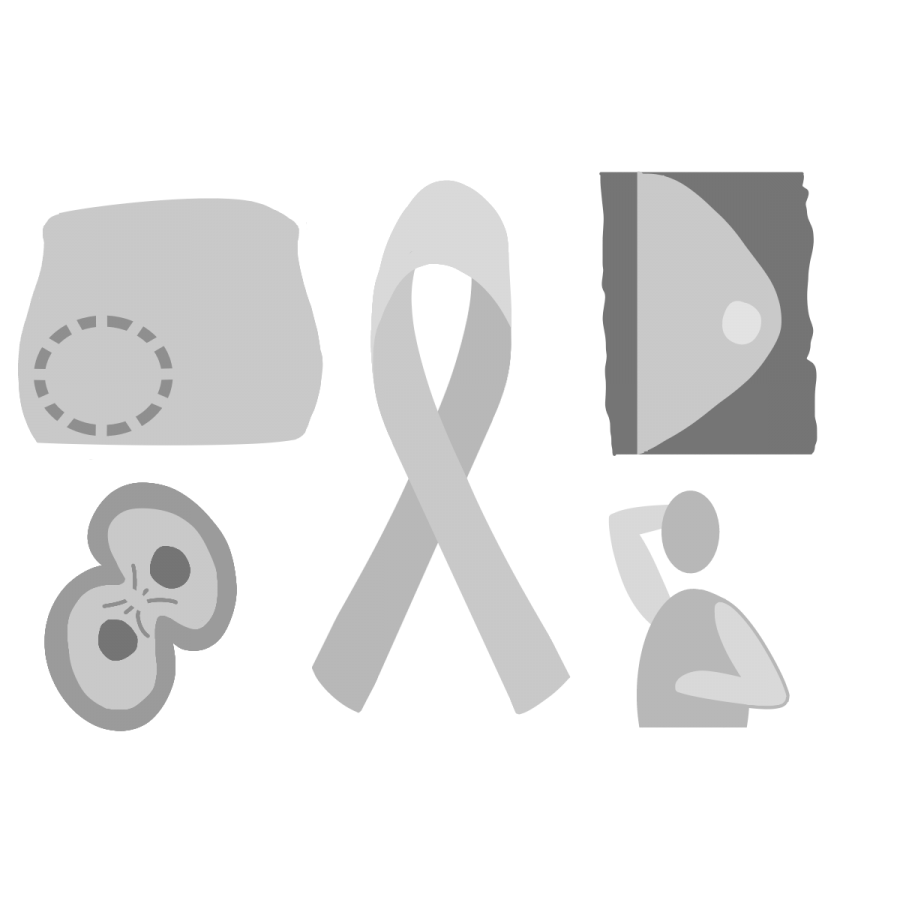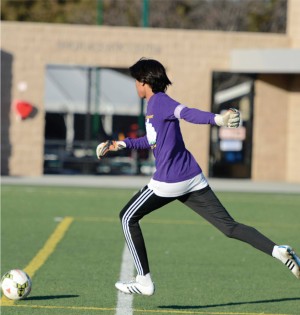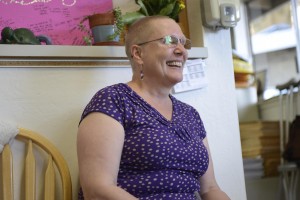Modern breast cancer treatments provide new answers to disease
October 18, 2018
October is breast cancer awareness month. Breast cancer will likely strike someone you know — one in eight women, to be precise.
Although a myriad of treatments are available now, the Edwin Smith Papyrus from Ancient Egypt circa 1500 BCE, described cauterization, or burning, as the preferred treatment for breast cancer, citing it as “untreatable.” When the 19th century rolled around with improvements in hygiene, the average life expectancy soared, and serious effort went into trying to find a cure for the disease. In 1882, surgeon William Stewart Halsted performed the first successful mastectomy and by the 1970s, researchers perfected lumpectomies, where only the tumor and surrounding tissue were removed.
One of the most invasive and effective forms of treatment is a mastectomy, which is a process that involves the excision of lymph nodes, breast tissue, and chest muscles. Generally, patients choose mastectomies after extensive consideration, due to the scar tissue, delayed healing, and overall symptoms.
Another form of treatment is chemotherapy, with blocks the spread of fast growing cancer cells, and is usually administered through a vein or pill. Since it is not a targeted treatment and affects the entire body, chemotherapy is a way to guarantee that the cancer cells are killed, even if it spreads somewhere else. However, due to its nonspecific nature, many living cells are usually killed as well. Often times, chemotherapy is given before a surgery to decrease the amount of tissue the surgeon needs to extract. Therefore, this treatment is usually reserved for late stage cancer.
“You have other tissues in your body that are also turning over and growing like the lining of your stomach and your hair follicles,” stated cancer center medical director and radiation oncologist Dr. Nam Cho of Valley Medical Center. “[That] leads to a lot of the side effects that women get with the chemotherapy.”
Breast cancer shows few discernable symptoms and is usually caught through regular scanning, especially in families where the disease is prevalent. Screenings range from x-raying the breasts to a scan for lumps or unusual skin deformities.
Palo Alto Medical Foundation Pediatrician Jane Chen stated that the occurrence of the cancer in children is rare, but when it happens, many of the same treatment procedures are taken.
“They don’t want to give too much of the cancer drugs, but they also don’t want to give too little, so they have a protocol based on how big the child is,” Chen said.
If caught early, a less invasive treatment like a partial mastectomy, lumpectomy or radiation can be performed.
In the future, the spread of cancer could be tested by something as simple as a blood test.
“I think one of the things we’re really excited for are ways to be able to detect cancer […] in a way that’s even more molecularly accurate,” stated Dr. Cho. “A powerful feature developing is if these circulating tumor cells could be tested by a simple blood test because that might be a way to screen patients better for cancer and monitor their response to treatment.”
This piece was originally published in the pages of The Winged Post on Oct. 17, 2018.


















![“[Building nerf blasters] became this outlet of creativity for me that hasn't been matched by anything else. The process [of] making a build complete to your desire is such a painstakingly difficult process, but I've had to learn from [the skills needed from] soldering to proper painting. There's so many different options for everything, if you think about it, it exists. The best part is [that] if it doesn't exist, you can build it yourself," Ishaan Parate said.](https://harkeraquila.com/wp-content/uploads/2022/08/DSC_8149-900x604.jpg)




![“When I came into high school, I was ready to be a follower. But DECA was a game changer for me. It helped me overcome my fear of public speaking, and it's played such a major role in who I've become today. To be able to successfully lead a chapter of 150 students, an officer team and be one of the upperclassmen I once really admired is something I'm [really] proud of,” Anvitha Tummala ('21) said.](https://harkeraquila.com/wp-content/uploads/2021/07/Screen-Shot-2021-07-25-at-9.50.05-AM-900x594.png)







![“I think getting up in the morning and having a sense of purpose [is exciting]. I think without a certain amount of drive, life is kind of obsolete and mundane, and I think having that every single day is what makes each day unique and kind of makes life exciting,” Neymika Jain (12) said.](https://harkeraquila.com/wp-content/uploads/2017/06/Screen-Shot-2017-06-03-at-4.54.16-PM.png)








![“My slogan is ‘slow feet, don’t eat, and I’m hungry.’ You need to run fast to get where you are–you aren't going to get those championships if you aren't fast,” Angel Cervantes (12) said. “I want to do well in school on my tests and in track and win championships for my team. I live by that, [and] I can do that anywhere: in the classroom or on the field.”](https://harkeraquila.com/wp-content/uploads/2018/06/DSC5146-900x601.jpg)
![“[Volleyball has] taught me how to fall correctly, and another thing it taught is that you don’t have to be the best at something to be good at it. If you just hit the ball in a smart way, then it still scores points and you’re good at it. You could be a background player and still make a much bigger impact on the team than you would think,” Anya Gert (’20) said.](https://harkeraquila.com/wp-content/uploads/2020/06/AnnaGert_JinTuan_HoHPhotoEdited-600x900.jpeg)

![“I'm not nearly there yet, but [my confidence has] definitely been getting better since I was pretty shy and timid coming into Harker my freshman year. I know that there's a lot of people that are really confident in what they do, and I really admire them. Everyone's so driven and that has really pushed me to kind of try to find my own place in high school and be more confident,” Alyssa Huang (’20) said.](https://harkeraquila.com/wp-content/uploads/2020/06/AlyssaHuang_EmilyChen_HoHPhoto-900x749.jpeg)











